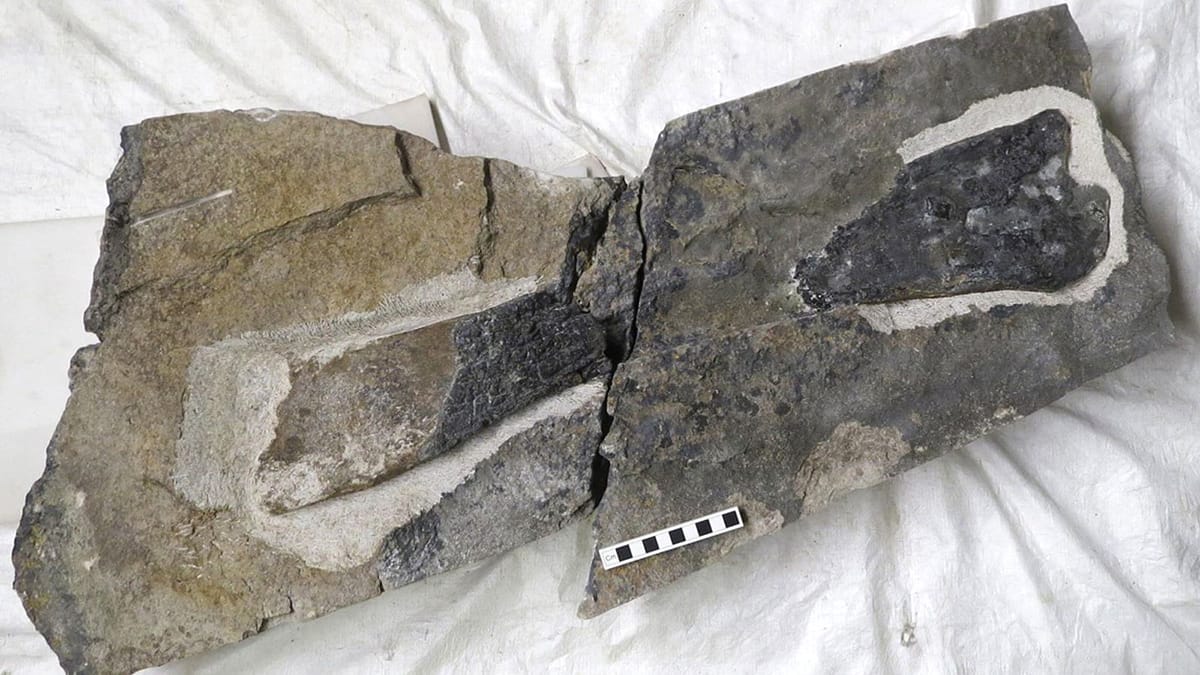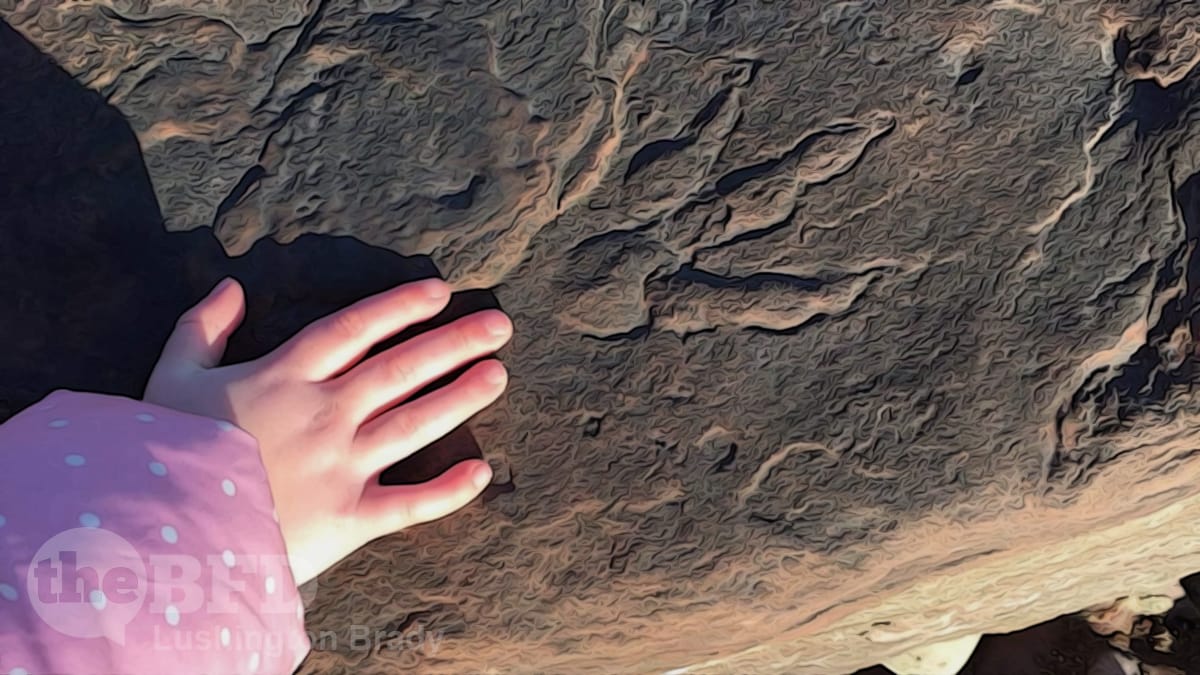Isaac Asimov famously said that the most exciting phrase to hear in science is not Eureka!, but That’s funny… Serendipity has a long and important history in science – in few sciences less than in paleontology. It’s always fascinating to consider how many fossil finds were serendipitous.
I had first-hand experience of this on a dig many years ago: someone took a swing with a mattock; before they could take another swing, someone else shouted out to stop. They’d noticed a few flakes of different-coloured material. In the end, an entire, intact skull was unearthed. Dinosaur Cove, one of the richest fossil beds in Australia, was discovered when some scientists walking along a beach looked up at the cliff face beside them and noticed an unmistakable skeleton outline.
A scientist out on a beach run recently made another such serendipitous find.
A 166-million-year-old dinosaur fossil has been found by a scientist while out running along the beach of a Scottish island.
Measuring around 50cm (19in) long, the ancient limb bone is thought to belong to a stegosaurian dinosaur, such as the recognisable Stegosaurus, and dates to the Middle Jurassic period.
Discovered on the Isle of Eigg, it is the first time such a fossil has been discovered in Scotland outside of Skye.
Dr Elsa Panciroli was running along the beach to catch up with colleagues when, she says, she “ran right over it”.
“It wasn’t clear exactly what kind of animal it belonged to at the time, but there was no doubt it was a dinosaur bone.”
Dr Panciroli said in 200 years of searching the area, “no one has found a dinosaur before, so this is quite special”.
She added: “This is a hugely significant find. Globally, Middle Jurassic fossils are rare and until now the only dinosaur fossils found in Scotland were on the Isle of Skye.
“This bone is 166 million years old and provides us with evidence that stegosaurs were living in Scotland at this time.”

The Middle Jurassic (174.1 to 163.5 million years ago) was one of the key evolutionary periods in the history of life on earth. Dinosaurs and mammals both went through a period of flourishing and diversification.
“The Middle Jurassic was a really interesting time for animals of all kinds. They were diversifying into lots of different groups and developing new ecologies – ways of life – to exploit their environment.”
Sky News
But it’s not just scientists who stumble across unexpected dinosaur finds. It’s not unusual for sharp-eyed lay people to find fossils – especially kids, for whom dinosaurs are endlessly fascinating.
My own sons regularly found fossilised shell and plant fragments near a river where we used to live. A six-year-old Birmingham boy got a fossil-hunting kit for Christmas in 2020 – and found a fossilised coral in his back yard. In 2006, a school group found a fossilised giant penguin in Kawhia Harbour.
In January, a four-year-old in Wales found a magnificent dinosaur footprint while out walking on the beach with her dad.
Lily Wilder made the discovery earlier in January while out with father Richard at Bendricks Bay, near Barry.
The South Wales beach is notable for its prehistoric prints, and the latest example is thought to be around 220 million years old.
It has now been removed and taken to the National Museum of Wales in Cardiff to be studied.
Lily’s mum Sally said: “Lily saw it when they were walking along and said ‘Daddy look.’
“When Richard came home and showed me the photograph I thought it looked amazing […]
“We were thrilled to find out it really was a dinosaur footprint and I am happy that it will be taken to the national museum where it can be enjoyed and studied for generations.”
Sky News

It’s unknown which species of dinosaur left the foot print, but it was definitely on the small side: the print is just 10cm long. The dinosaur is estimated to have been around 75cm tall and 2.5m long, walking on two legs. It would have preyed on bugs and smaller creatures. The footprint is similar to Coelophysis, whose fossilised footprints have been found in the US. No evidence of Coelophysis has been found in the UK before.
So, keep a sharp eye out, next time you’re out for a tramp: you never know what’s been waiting millions of years to be discovered.









